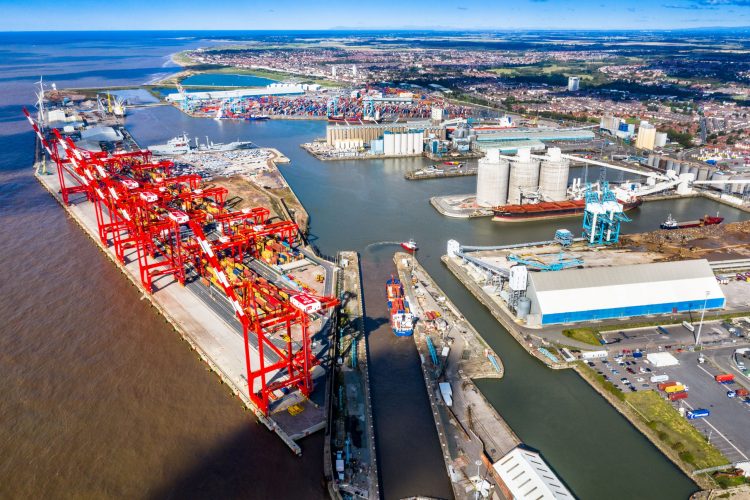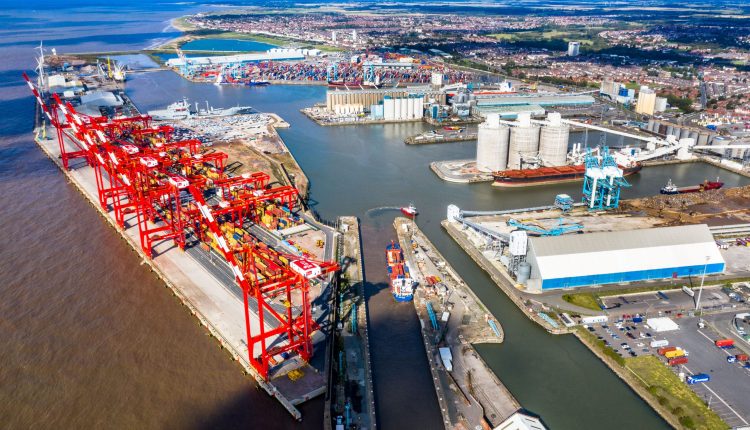Port of Liverpool unveils ‘UK’s largest solar project’
Peel Ports Group and energy giant E.ON will install what they claim will be the UK’s largest solar power project at the Port of Liverpool. Tony McDonough reports

A huge solar power project at the Port of Liverpool will see 63,000 solar panels installed generating up to 31MW of electricity.
Port owner Peel Ports Group has teamed up with energy giant E.ON on the project which they claim will be the largest solar power project in the UK. It covers both Liverpool and Sefton and planning applications have been lodged with both councils.
This news comes just weeks after Peel Ports announced it was set to increase its wind power capacity at the port, installing new turbines to replace the existing structures. Its generating capacity would be around 20MW.
The solar scheme is the first stage of a 25-year agreement between Peel Ports Group, the UK’s second-biggest port operator, an E.ON. Peel Ports has set a target of being a net zero carbon business by 2040.
Up to 63,000 solar panels – enough to cover 18 football pitches – will be installed on 26 buildings across Port of Liverpool. Their capacity would be enough to power as the annual needs of more than 10,000 average UK homes.
The exact number of panels and their generation potential will be confirmed in the final designs but the solar array is expected to be the largest of its kind in the UK. It will generate up to 25% of the Port’s annual electricity needs.
Peel says the solar panels will reduce CO2 emissions from the site by more than 6,500 tonnes each year, the equivalent of taking more than 2,250 cars off the road.
Minimising disruption within the local area, the project will be wholly contained within the existing footprint of the Port, using existing roof space and bringing all equipment and technology directly to the port by sea, removing any impact on local roads.
More than 6,000 solar panels have already been delivered to the Port ready to be installed on the new 240,000 square foot Alexandra Dock warehouse which is nearing completion.
Claudio Veritiero , chief executive of Peel Ports Group, said: “We’re proud to be embarking on this long-term partnership with E.ON and to be undertaking this important project together, revolutionising the Port of Liverpool’s energy system.
“Ports of the future need to become more sustainable environments and we must play our part in a greener supply chain.
“There is still work to do, but this project is a huge step for Peel Ports Group in cutting emissions and driving our ambition to become a net-zero port operator by 2040.”
The solar project is being financed and delivered by E.ON with installation of the solar panels under way and due to be completed by mid-2026.

E.ON has committed to using local contractors where possible and will also be looking to work with local companies for the ongoing upkeep of the 25-year period.
The second stage of the agreement will replace the five existing wind turbines at the port with four new, larger turbines generating close to 20MW.
This will bring Peel Ports Group within reach of its ambition of powering the Port of Liverpool entirely by renewable energy generated on site, including at night and over winter when the solar panels are not producing as much energy.
It is expected this phase could begin as early as 2027/28 following planning consent and consultation with the local community.
READ MORE: Mersey Maritime to brief city region councillors
Chris Norbury, E.ON UK chief executive, added: “The Port of Liverpool is a critical piece of infrastructure for the UK and decarbonising sites like this will be vital for the UK to achieve its environmental goals.
“Simply put, we all need to move faster on reducing emissions and this huge project will be a massive step in the right direction.”
Specialists involved in the project include EMTEC, FES, Absolute Solar and Cogeo as planning co-ordinators.

